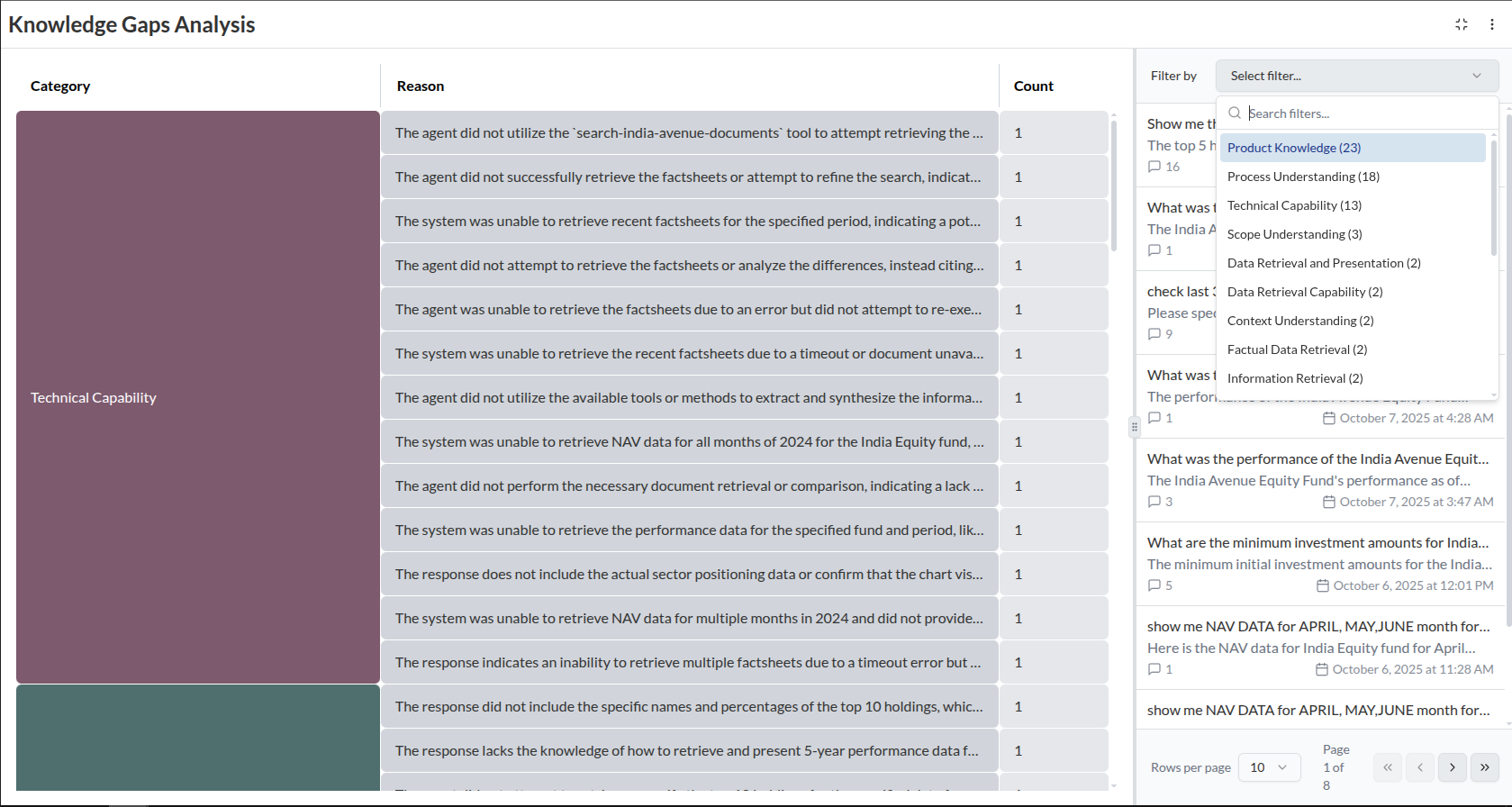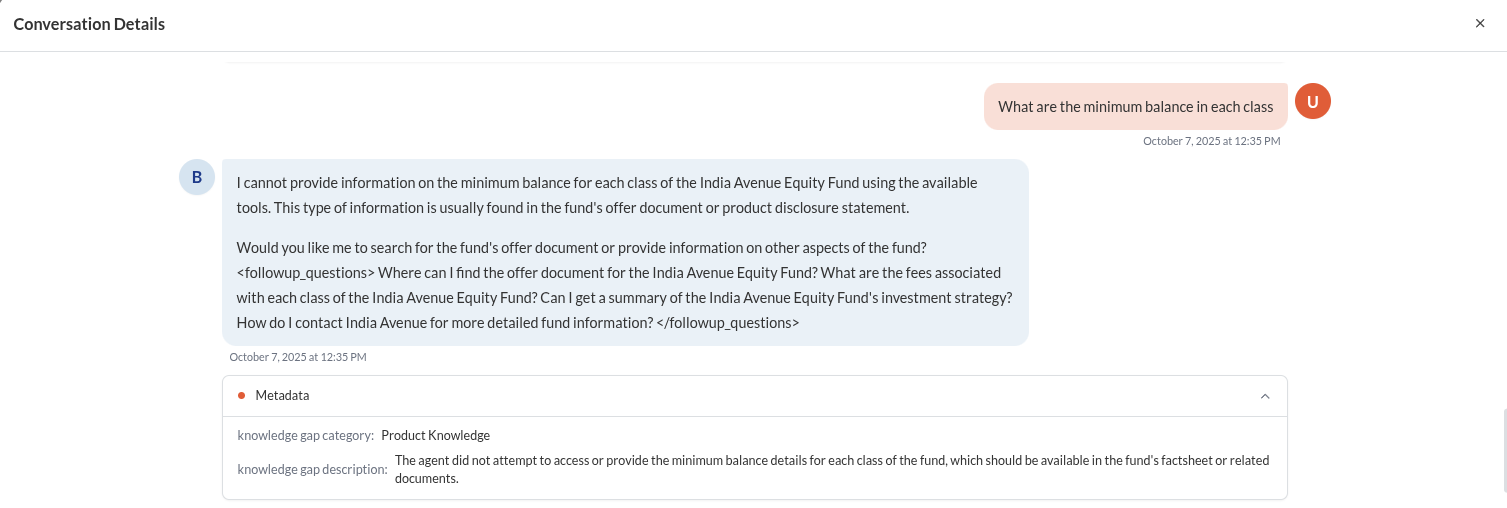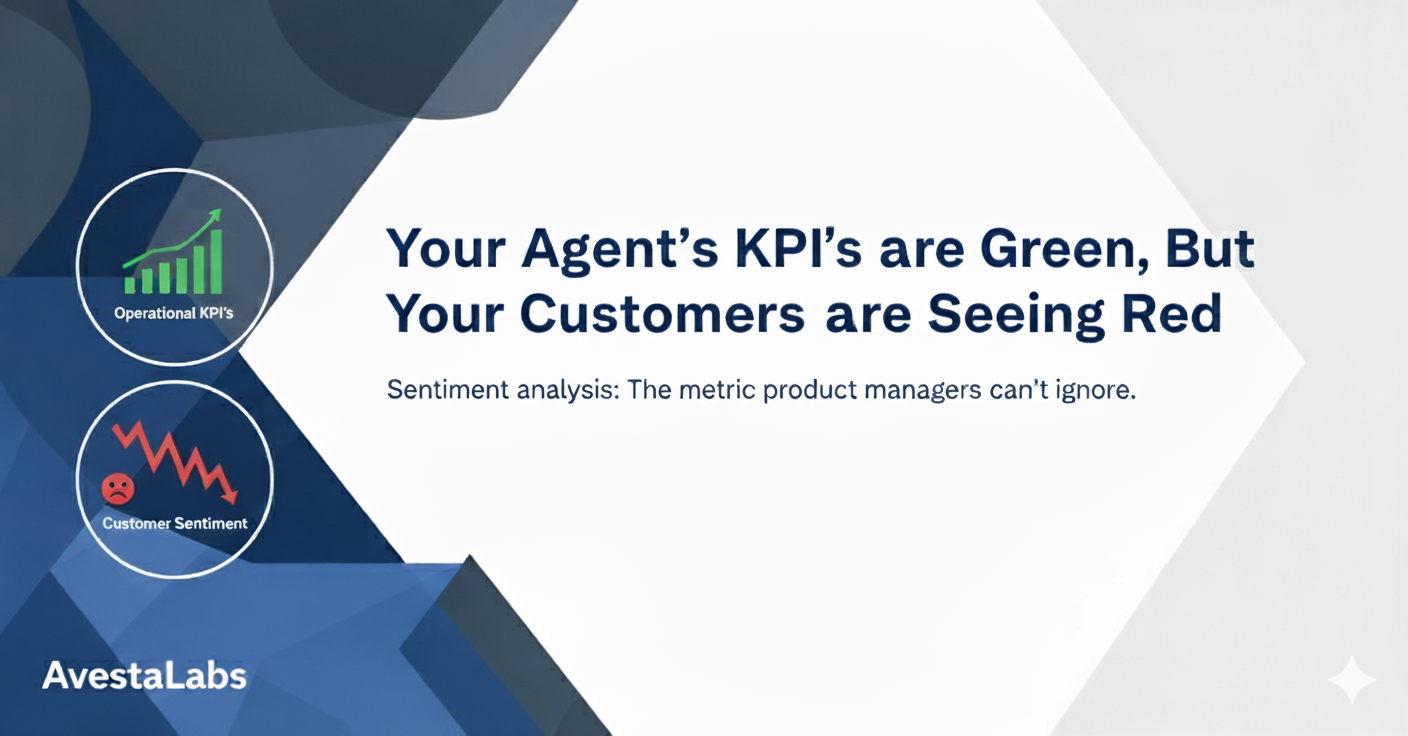
Your AI's Most Valuable Answer Isn't 'Yes.' It's 'I Don't Know.'
I remember the moment perfectly. It's a scene every product manager knows: we had just pushed our new Agentic AI support agent live, and the entire team was glued to the screen. I was watching the logs in real-time, my coffee forgotten, heart pounding with a mix of excitement and anxiety.
Then it happened. A high-value enterprise customer asked a complex, multi-part question about a niche use case. I held my breath. After a second, the agent's response appeared:
"I'm sorry, I cannot find specific information on that topic."
My first thought was a gut punch: It failed.
But a second later, a different thought pushed through, and it has fundamentally changed how I approach product management. The AI didn't fail. It was honest. It didn't hallucinate a plausible but incorrect answer. It didn't send the user down a rabbit hole. It drew a clear line in the sand and, in doing so, handed our team a golden opportunity.
The Dangerous Obsession with a Perfect Score
In the race to build smarter Gen AI, we're obsessed with what our models know. We chase a 95% or 99% "correct answer rate" as the ultimate badge of success. But this metric is a vanity mirror—it only reflects what you've already taught your AI, not what your users actually need from it.
Focusing only on the answers your agent gets right is like trying to navigate a new city by only looking at the streets you already know. You feel successful, but you're completely blind to the faster routes, the hidden gems, and the new destinations everyone is starting to talk about.
This blindness has a direct business cost:
Outdated roadmaps: Your feature backlog gets stuck, based on internal assumptions, not the real-time, evolving needs of your most engaged users.
Content That Misses the Mark: Your support and content teams are writing articles they think are useful, while users are screaming for help on topics you don't even know exist.
Damaging Trust: Even worse, an AI optimized only for 'answering' will often hallucinate, confidently giving wrong information that damages the trust you've built with your users.
From Knowledge Gaps to a Treasure Map
We've started calling these "I don't know" moments Knowledge Gaps. And they have become the single most valuable, unfiltered, and actionable source of feedback for our entire product strategy.
Think of your AI agent as an explorer you've sent into the wilderness of your customer base. Every Knowledge Gap it reports is a clue on a treasure map, leading you directly to where your users want to go next.
A few weeks ago, our explorer left us a clue. A user asked, "Can you give me a quick summary of all integration partners?" Our agent correctly replied that it couldn't. It had access to dozens of individual setup guides but no single high-level summary. For the user, a dead end. For my team, a blinking neon sign. The next day, "Create high-level integrations summary page" was at the top of our content backlog.
Another clue came when a developer asked our agent about connecting to a brand-new, popular API. Our agent, again, correctly reported it had no information. This "failure" was a direct signal from the market, kicking off a conversation with our partnerships team that same afternoon.
Your AI's ability to say "I don't know" isn't a bug; it's your most powerful feedback channel.

How to Systematically Mine for Gold
The challenge is that these golden nuggets are buried in thousands of lines of conversation logs—a classic Unstructured Data analysis problem that's impossible to solve manually. That's why a smart AI Analytics platform isn't a nice-to-have; it's the core of this entire strategy.
With MetricSense, we've moved beyond just tracking success rates. Our advanced Conversation Data analysis automatically surfaces and analyzes these Knowledge Gaps.
This isn't just about logging failures. It's about turning them into a structured, prioritized list of opportunities:
Knowledge Gap Analysis: The platform automatically identifies every time your agent fails to answer and clusters these queries by topic. You can instantly see that 200 users asked about "SAML integration" this week, while only 5 asked about something else. Your top priority becomes crystal clear.
Emerging Intent Detection: It groups similar but differently phrased questions to spot new trends. Queries like "How do I connect to service X?", "Docs for API X?", and "Does it work with X?" are all grouped into a single, high-priority "Integration with X" opportunity.
Sentiment on Failure: Metric Sense analyzes how users react when the agent says "I don't know." This helps distinguish between a mild inconvenience and a critical, rage-inducing gap in your product or service.

The Business Impact: From "Can't Answer" to "Can't-Miss Opportunities"
By embracing what your AI doesn't know, you transform your agent from a simple deflection tool into a strategic intelligence engine.
✅ Build a roadmap Your Users Actually Want: Stop guessing. Use a data-driven backlog of features and content requested directly by your most active users.
✅ Accelerate Your Content Strategy: Eliminate writer's block for your support team. They'll have a constantly updated list of the most needed articles, FAQs, and tutorials.
✅ Gain Real-Time Market Intelligence: Spot trends, competitive mentions, and feature requests the moment they emerge, long before they show up in quarterly survey results.
✅ Increase User Trust: An AI that is honestly unhelpful is far better than one that is confidently wrong. Admitting ignorance is a feature that builds long-term trust.
This approach is essential for any forward-thinking team:
Product Managers: Get an unfiltered, automatically prioritized backlog sourced directly from user conversations.
CX & Support Leaders: Pinpoint the exact knowledge gaps that are causing the most user friction and driving up support tickets.
Marketing & Strategy Teams: Discover the exact language your customers use and identify emerging market trends to gain a competitive edge.
Conclusion
Stop chasing a perfect score. The real treasure is in the questions your AI can't answer yet. That log file isn't a record of failures; it's your treasure map. It's where your users are telling you exactly what to build next.
Partner with AvestaLabs to unlock true AI agent insights:
- Get an instant sentiment audit of your live agent
- Full access to drill-down and conversation analysis
- Implementation support from our technical team
- No credit card required
Get started in 5 minutes: hello@avestalabs.ai

A versatile engineer with 2.5+ years of experience in building and managing the entire data lifecycle, from back-end development to cloud infrastructure and data analysis. I am passionate about creating automated, scalable solutions on AWS and transforming complex data into actionable insights that drive business decisions.


